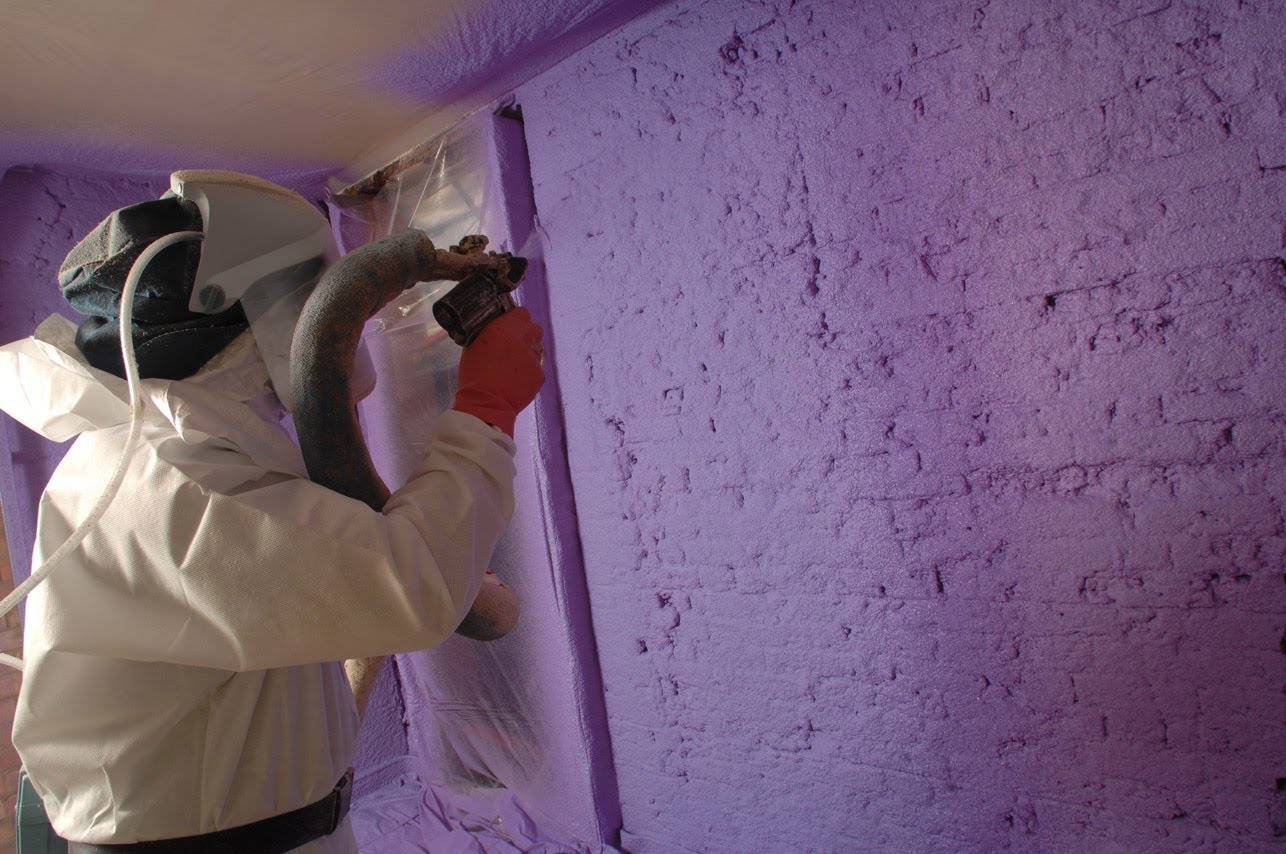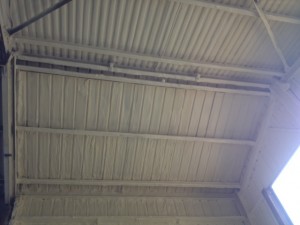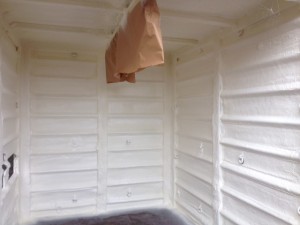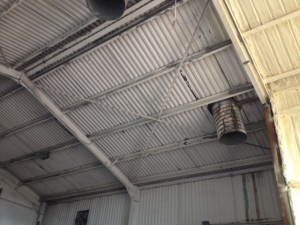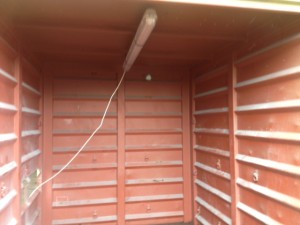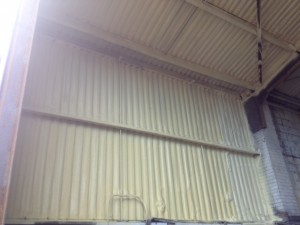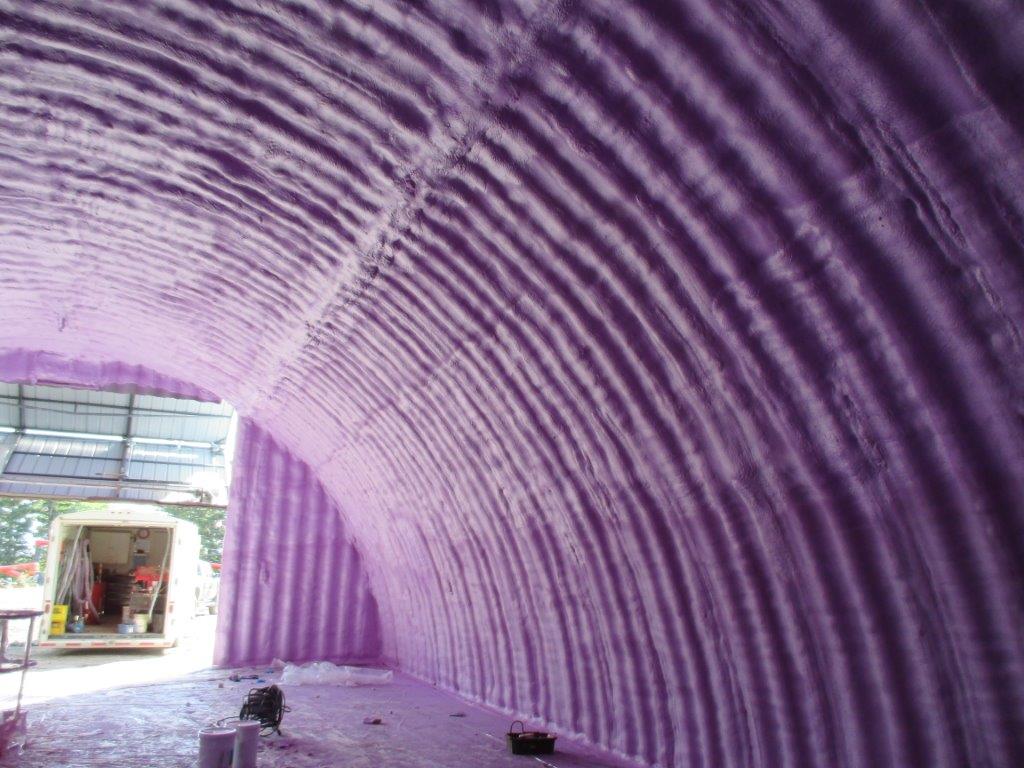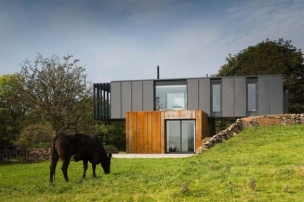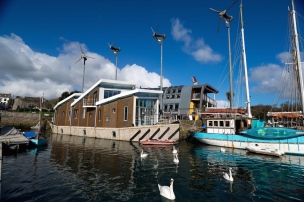Spray Foam Machine
Gardwell Coatings have recently purchased a foam insulation system for internal walls, floors and roofs that provides a seamless airtight solution, which, unlike conventional insulation materials, is spray applied.
Insulation graph
The illustration compares the thicknesses of some commonly used insulation products to achieve a comparable thermal performance. It is evident that the polyurethane significantly outperforms the alternative products.
A key approach to this is improving thermal insulation in buildings.
Spray foam insulation is an alternative to traditional building insulation such as fibreglass. A two-component mixture composed of isocyanate and polyol resin comes together at the tip of a gun, and forms an expanding foam that is sprayed onto roof tiles, concrete slabs, into wall cavities, or through holes drilled in into a cavity of a finished wall.
Spray foam insulation saves on energy costs and lowers utility bills. Studies by the US Department of Energy show that 40% of a home's energy is lost as the result of air infiltration through walls, windows and doorways.[1] Buildings treated with spray foam insulation typically insulate as much as 50% better than traditional insulation products.[2]
Insulation that is sprayed in buildings protects against moisture, which provides the benefit of reducing the chance of harmful mold and mildew. Eliminating mold growth reduces the likelihood of rotting wood in a home, and allergic reactions to mold spores.
In addition to building temperature and moisture control, spray foam insulation is often used to reduce noise.Foam insulation serves as a barrier to airborne sounds, and reduces airborne sound transfer through a building's roof, floor and walls.
Climate Protection and Energy Savings
Climate change is one of the major industrial challenges of our time. Business, science, politics and industry are being called upon to slow down any further rise in greenhouse gas emissions and use available resources more efficiently.
It is clear to everyone today that there is a finite limit to fossil fuel sources. Natural gas has recently become a focus of speculation.
Faced with these facts, various concepts and strategies for sustainable protection of the environment and climate, for the future, have been put forward. A key approach is improving thermal insulation in buildings.
A concern for property owners is energy conservation measures and the costs entailed. The technologies and materials required, have been available for some time and can be very cost effective. In many cases, investing in thermal insulation measures pays for itself in less than ten years, and in many countries grants and attractive loans are being given.
Thermal Insulation of Buildings
New and old buildings are today and will be in the future very largely subject to energy saving and environmental protection requirements. The focus here is on thermal insulation and sealing of buildings and roofs.
From a structural point of view, roofs are the most exposed parts of a building. They have to withstand heat and cold, wet and dry conditions, storms and snow, and even decades later still be water-tight and provide reliable thermal insulation.
Benefits
- Insulation with no joints or gaps
- Maximum insulating performance at minimum thickness
- Insulation of components in hard to treat areas
- Excellent adhesion to the substrate . It fits like a second skin and is suitable for virtually all substrates such as corrugated fibre cement, profiled metal sheet or timber boards.
- Prolongs the life of buildings
- Rapid installation times
- Increases comfort in the home Residents of buildings insulated with spray foam report an improved indoor environment and a greater degree of comfort.
- Low material weight places very little stress on components making it safer, for example, when there is heavy snow on flat roofs.
Walltite has such a varied and wide range of uses; find below some case studies where Walltite has been used successfully.
Grand Designs Shipping Container House
Location: County Derry, N Ireland.
Architect: Patrick Bradley.
Read more.
Floating Office
Location:Penryn.
Architect:Michael Hormann.
Read more.
The Solution for Hard to Treat Cavaties
Location:Guildford.
Read more.
